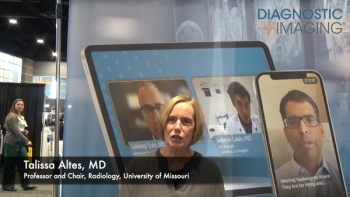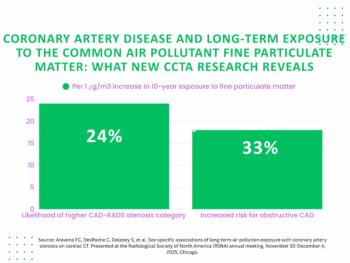
Interval Breast Cancer: What a New Mammography Study Reveals
In a new study of 1,232 women diagnosed with breast cancer within a year of a screening mammography exam, researchers found that interval breast cancer was 17 percent more likely in women with dense or extremely dense breasts, and over three times more likely to involve stage 2 or higher primary tumors in comparison to screening-detected breast cancer.
While the authors of a recent study noted that annual mammography screening had a 92 percent sensitivity rate for diagnosing breast cancer, they also found that interval breast cancer, detected between annual screenings, was more likely to have regional lymph node involvement at stage one or higher, and more likely to occur in women with dense breasts.
For the retrospective study, recently published in
In comparison to screening mammography detected cancers, researchers found greater percentages of invasive cancer in interval breast cancers (88 percent vs. 75 percent); primary tumor stages of T2 and higher (43 percent vs. 12 percent); and regional lymph node stage one or higher (22 percent vs. 12 percent).
The study authors noted that patients with an interval breast cancer diagnosis were 16 percent more likely to have a first-degree relative who had breast cancer (44 percent) in comparison to women with screening-detected breast cancer (28 percent). While the researchers noted this finding did not prove to be significant on multivariate analysis, they did find a significant association between breast density and interval breast cancer.
“On multivariate analysis, we found that having dense breast tissue more than doubled the likelihood of an interval breast cancer diagnosis,” wrote Emily B. Ambinder, M.D., MS, an assistant professor with the Johns Hopkins Medicine Department of Radiology and Radiological Science.
(Editor’s note: For related content, see “
The researchers also noted that 79 percent of the interval breast cancer diagnoses were due to breast-related symptoms and 21 percent of these cases were detected with breast magnetic resonance imaging (MRI) conducted between annual screening mammography exams. In a subset analysis, Ambinder and colleagues found that interval cancers detected with a high-risk screening MRI were over seven times more likely to be ductal carcinoma in situ (DCIS) (40 percent) as opposed to symptomatic cases of interval breast cancers (5.3 percent). In symptomatic cases that led to an interval breast cancer diagnosis, researchers noted that 95 percent were invasive carcinoma in comparison to 60 percent of interval breast cancers detected with screening MRI.
“Interval cancers diagnosed on high-risk screening MRI were more often DCIS and had lower primary tumor stage than cancers diagnosed due to a symptom. … This supports the utility of high-risk screening MRI,” maintained Ambinder and colleagues.
However, the study authors acknowledged that cost concerns and limited access contribute to limited use of MRI, even among women deemed to be at high risk for breast cancer. Ambinder and colleagues noted the potential of abbreviated MRI and ongoing research with contrast-enhanced mammography and breast positron emission tomography (PET) as possible supplemental screening options.
Newsletter
Stay at the forefront of radiology with the Diagnostic Imaging newsletter, delivering the latest news, clinical insights, and imaging advancements for today’s radiologists.




























